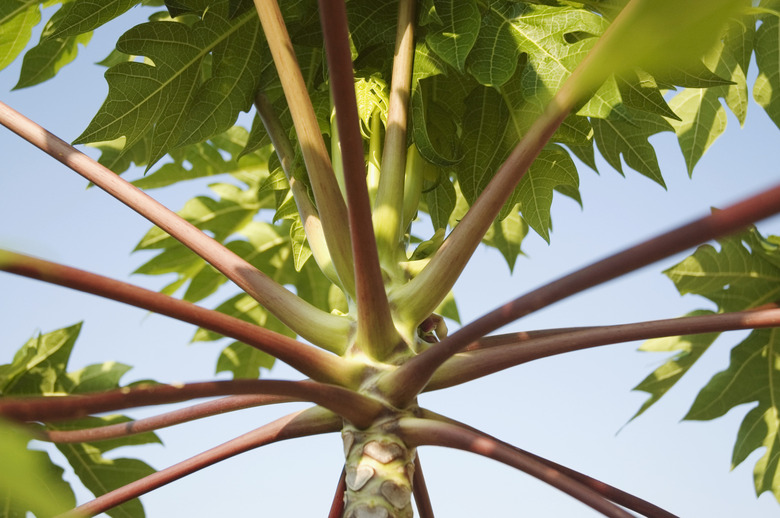How To Save Castor Bean Seeds
Castor bean plants, also known as mole plants due to a reputation for repelling moles, are a beautiful annual ornamental that grows quickly and may reach higher than 8 feet by the end of summer. The seeds of Ricinus communis are extremely toxic, so be careful when handling and saving them.
Step 1
Select seed pods for saving high off the ground and put netting around them so they don't fall to the ground. Remove and throw away immature seed pods from elsewhere on the castor bean plant. Allow the netted pods to turn brown and dry; the plant will have started to die back or may have completely dried up.
Step 2
Put on gloves and clip a seedpod from the castor bean plant. Break the pod apart with your gloved fingers into three parts, each part containing one seed.
- Castor bean plants, also known as mole plants due to a reputation for repelling moles, are a beautiful annual ornamental that grows quickly and may reach higher than 8 feet by the end of summer.
Step 3
Peel the outer covering carefully to reveal the seed. Dispose of the materials except the seeds; placing these in a compost pile is fine.
Step 4
Dry the seeds for a week or two in an area not accessible by pets or children, such as on top of a refrigerator or high shelf. If you have cats that jump on shelves, place the seeds in a cabinet or box that the cat and children cannot access.
Step 5
Place the dry seeds in a paper envelope, a plastic bag or sealed plastic container. Adding a few grains of rice or a silica packet to the container is a good idea though not required. Store the seed container in a dark and dry area, again one not accessible to children and pets. In the spring, plant your seeds to create a new crop.
- Peel the outer covering carefully to reveal the seed.
- Store the seed container in a dark and dry area, again one not accessible to children and pets.
Castor Bean Seeds Survive Freezing?
Castor beans require special treatment for quick germination. Plant in sterile seed-starting mix, and place in a location where the temperature remains above 75 degrees Fahrenheit until the seeds germinate in 10 to 21 days. Keep the soil moist, but not waterlogged, as the plants grow to maturity. If you can't resist growing castor beans, deadhead the flowers to prevent accidental poisoning and avoid spreading the plant beyond your garden.
Things Needed
- Netting
- Gloves
- Storage container
- Rice grains or silica packet
References
- WSU Master Gardeners of Clark County: Is Ricinus Risky?
- University of Minnesota Extension: Saving Vegetables Seeds: Tomatoes, Peppers, Peas and Beans
- Floridata: Ricinus Communis
- Terry L. Ettinger Horticulture Consulting Services: Question of the Week — Growing Castor Bean Plants
- Cal-IPC: Invasive Plants of California's Wildland — Ricinus Communis
